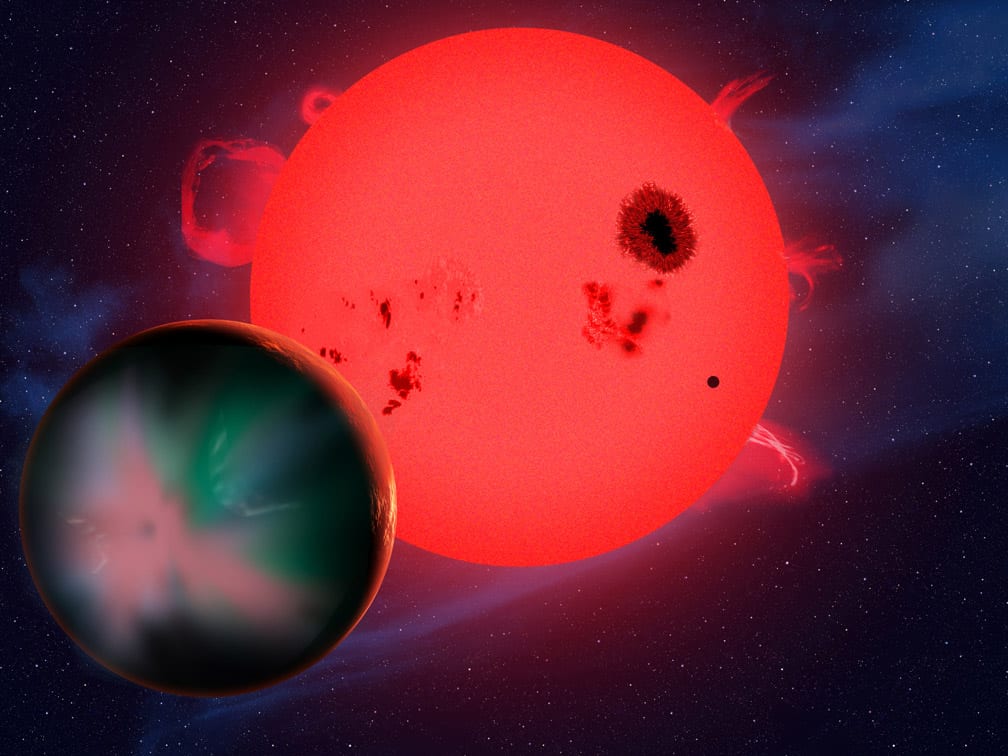
Recent Research Highlights:
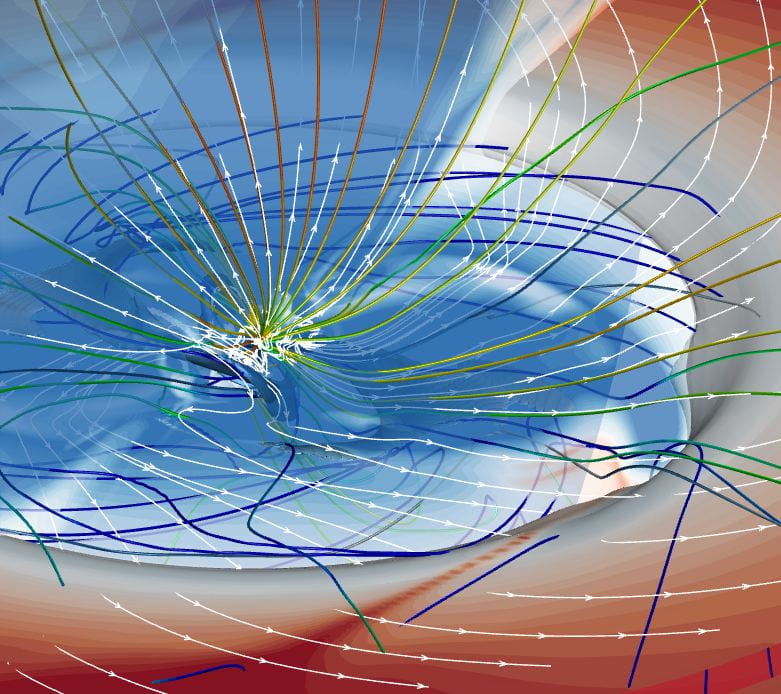
Protoplanetary systems are the stage where an evolving star still has a thin disk around it where planets form. The inner part of the disk, close to the star is expected to accrete leading to a loss of angular momentum that needs to be compensated by the dynamics of the disk in its other parts. However, the inner part of the disk interacts with the stellar corona and the stellar magnetic field in a way that is not yet fully clear. Using a realistic model for the stellar corona and the disk, we performed a simulation of that interaction and found the the disk accretion may actually be suppressed by the stellar corona.
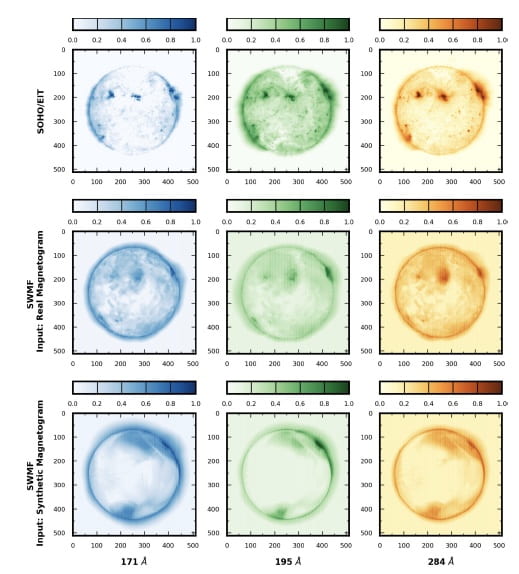
Magnetogram data are maps of the photospheric radial magnetic field of the Sun. Magnetograms are used to drive 3D MHD models to predict solar wind data at 1AU near the Earth. However, these solar wind predictions could only be obtained when magnetogram data is already available so it can not be predicted for the future. Dynamo models could provide predicted magnetograms which can also being used to predict solar wind conditions at 1AU. Mr. Kalpa Henadhira-Arachchige performed a set of simulations that compares the performance of the model using real and synthetic magnetograms. We find that the synthetic magnetograms could be used to predict the solar wind conditions. within certain limitations.
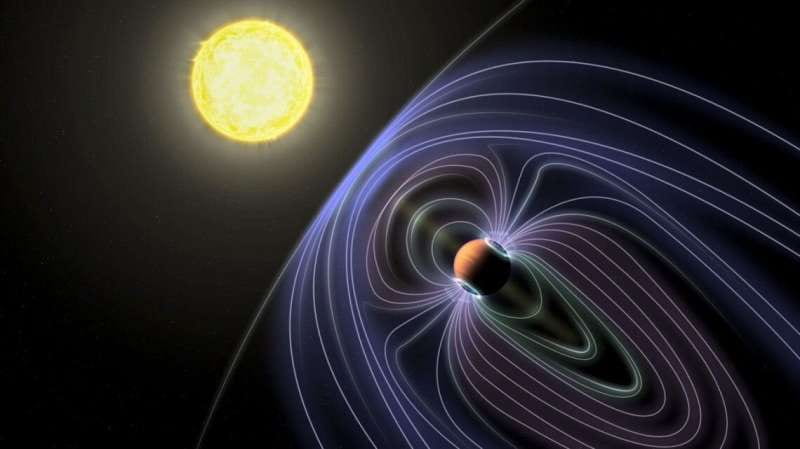
Stars and their hot coronae emit thermal radio emission in a range of frequencies. If a short-orbit exoplanet passes through the stellar corona along its orbit, it is expected that this passage will modify the path of the radio waves, creating a "radio transit", just like the exoplanet blocks some of the star light as it passes between the star and us. Dr. Soumitra Hazra performed a simulation to create predictions for such an effect and found that it should be observable. Since the radio wave disruption depends on the strength of the planetary magnetic field, this method may be useful to constrain magnetic fields of exoplanets, an important factor in planetary habitability.
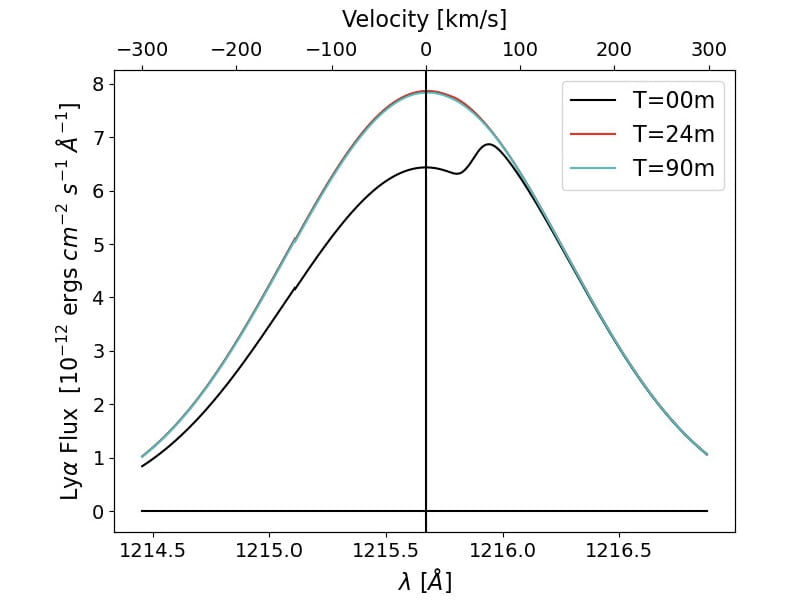
A close-in exoplanet with an atmosphere is expected to suffer from a strong atmospheric loss due to the intense ionizing EUV stellar radiation. In the case of an escaping neutral Hydrogen atmosphere, the background Ly alpha stellar radiation is being absorbed and blue shifted by the escaping atmosphere. Therefore, Ly alpha observations could tell us a lot about the atmosphere of the exoplanet as well as the rate at which the atmosphere is being lost. We performed a simulation that demonstrates that such an observation is highly sensitive to the stellar wind conditions, which could vary a lot along the orbit of the planet.

The habitability of the surface of any planet is determined by a complex evolution of its interior, surface, and atmosphere. The electromagnetic and particle radiation of stars drive thermal, chemical, and physical alteration of planetary atmospheres, including escape. Many known extrasolar planets experience vastly different stellar environments than those in our solar system: It is crucial to understand the broad range of processes that lead to atmospheric escape and evolution under a wide range of conditions if we are to assess the habitability of worlds around other stars. This is a review the different escape mechanisms proposed for the evolution of planetary and exoplanetary atmospheres.
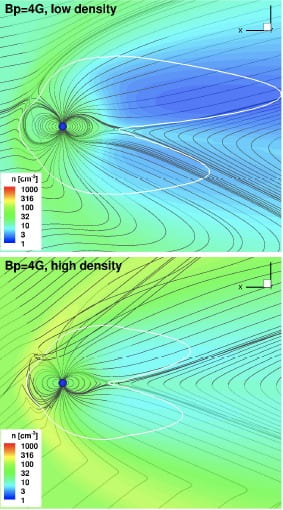
TOI 700 is a recently discovered exoplanet that might be habitable. Simulations of this planet show that the stellar wind conditions near the planet are not very extreme—slightly stronger than that near the Earth in terms of the stellar wind ram pressure and the intensity of the interplanetary magnetic field. Thus, the space environment near TOI 700 d may not be extremely harmful to the planetary atmosphere, assuming the planet resembles the Earth. Nevertheless, based on solar system observations, the modest stellar wind conditions may not guarantee atmospheric retention of exoplanets.
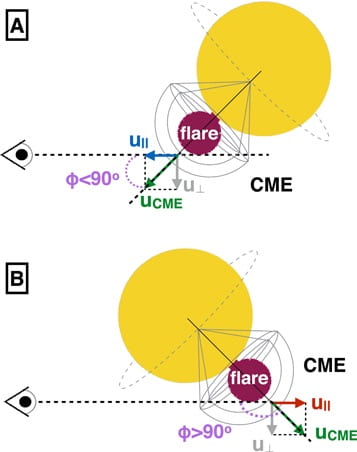
Solar coronal mass ejections (CMEs) and flares have a statistically well-defined relationship, with more energetic X-ray flares corresponding to faster and more massive CMEs. How this relationship extends to more magnetically active stars is a subject of open research. Here we study the most probable stellar CME candidates associated with flares captured in the literature to date, all of which were observed on magnetically active stars. We use a simple CME model to derive masses and kinetic energies from observed quantities and transform associated flare data to the Geostationary Operational Environmental Satellite 1─8 Å band. The results suggest that the CMEs associated with very energetic flares on active stars are more limited in terms of the ejecta velocity than the ejecta mass, possibly because of the restraining influence of strong overlying magnetic fields and stellar wind drag. Lower CME kinetic energies and velocities present a more optimistic scenario for the effects of CME impacts on exoplanets in close proximity to active stellar hosts.
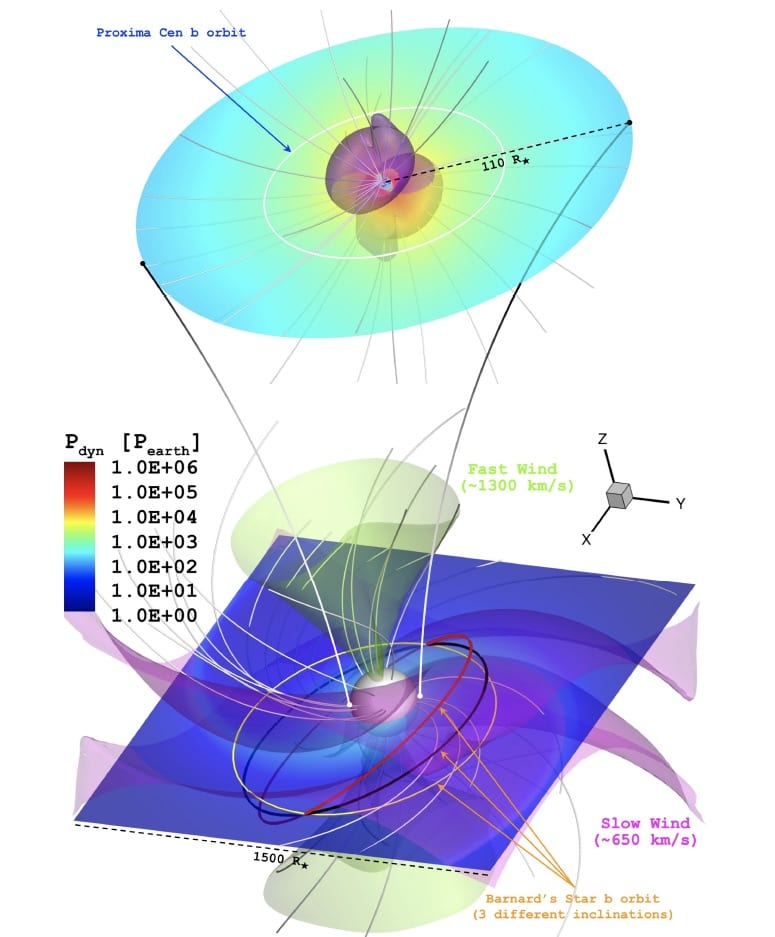
A physically realistic stellar wind model based on Alfven wave dissipation has been used to simulate the wind from Barnard’s Star and to calculate the conditions at the location of its recently discovered planetary companion. Barnard’s Star b experiences much less intense wind pressure than the much more close-in planet Proxima b and the planets of the TRAPPIST-1 system. The milder wind conditions are more a result of its much greater orbital distance rather than in differences in the surface magnetic field strengths of the host stars. This work has been submitted to the Astrophysical Journal.
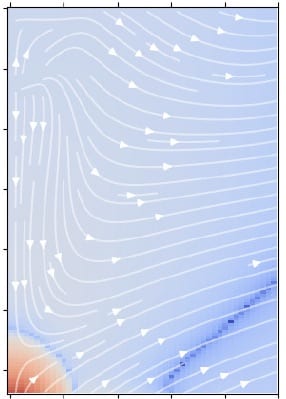
Qusai Al Shidi, a PhD student in our group, has developed a new multi-fluid MHD model that captures the frictional interaction between neutral and ionized particles in the solar chromosphere. The model shows that chromospheric eruptions know as "spicules", could be driven by this frictional heating and not necessarily by magnetic reconnection as thought before. This work has been submitted to Solar Physics.
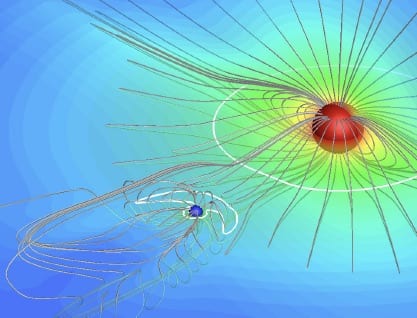
So far, attempts to observe exoplanets in radio bands have failed due to the weak signal. We proposed an alternative way to detect exoplanets in the radio by looking at the planet modulation of the ambient radio emissions coming from the star (similar to the occultation of the star's light by the planet during transit). Our simulations have shown that such modulation could be observable so it offers a new way to detect exoplanets. This work is published in the Astronomical Journal.
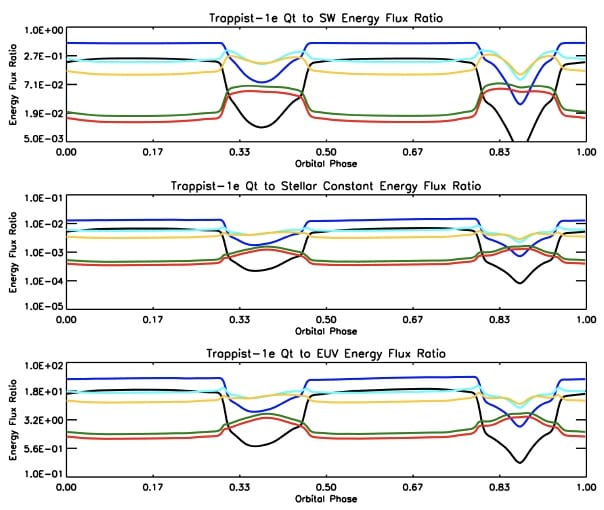
We calculated the amount of heat potentially imposed on an exoplanet by an extreme stellar wind. We found that the heating may be huge, almost 1% of the total light the the planet receives from its host star. This work has been published in the Astrophysical Journal.
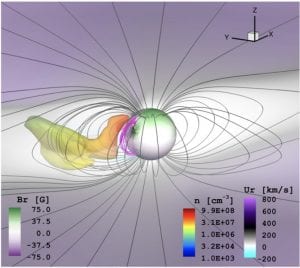
Using computer simulations, we showed that CMEs cannot leave the stellar corona if they are surpassed by the strong over-arching magnetic field and most of their kinetic energy is converted to flare energy. This work has been published in the Astrophysical Journal.
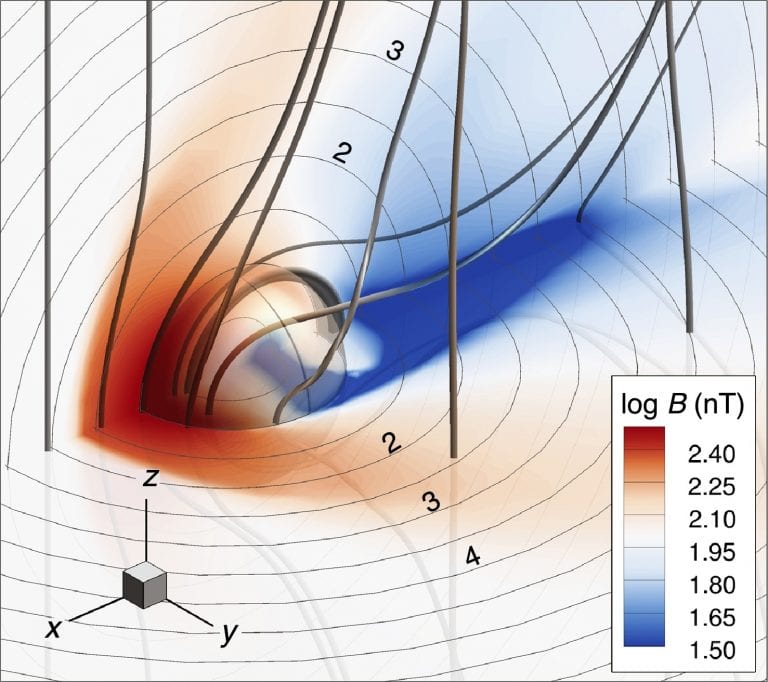
We have studied weather meteorites could have been magnetized by the solar wind during the early time of the solar system. This work has been published in Earth and Planetary Science Letters.
